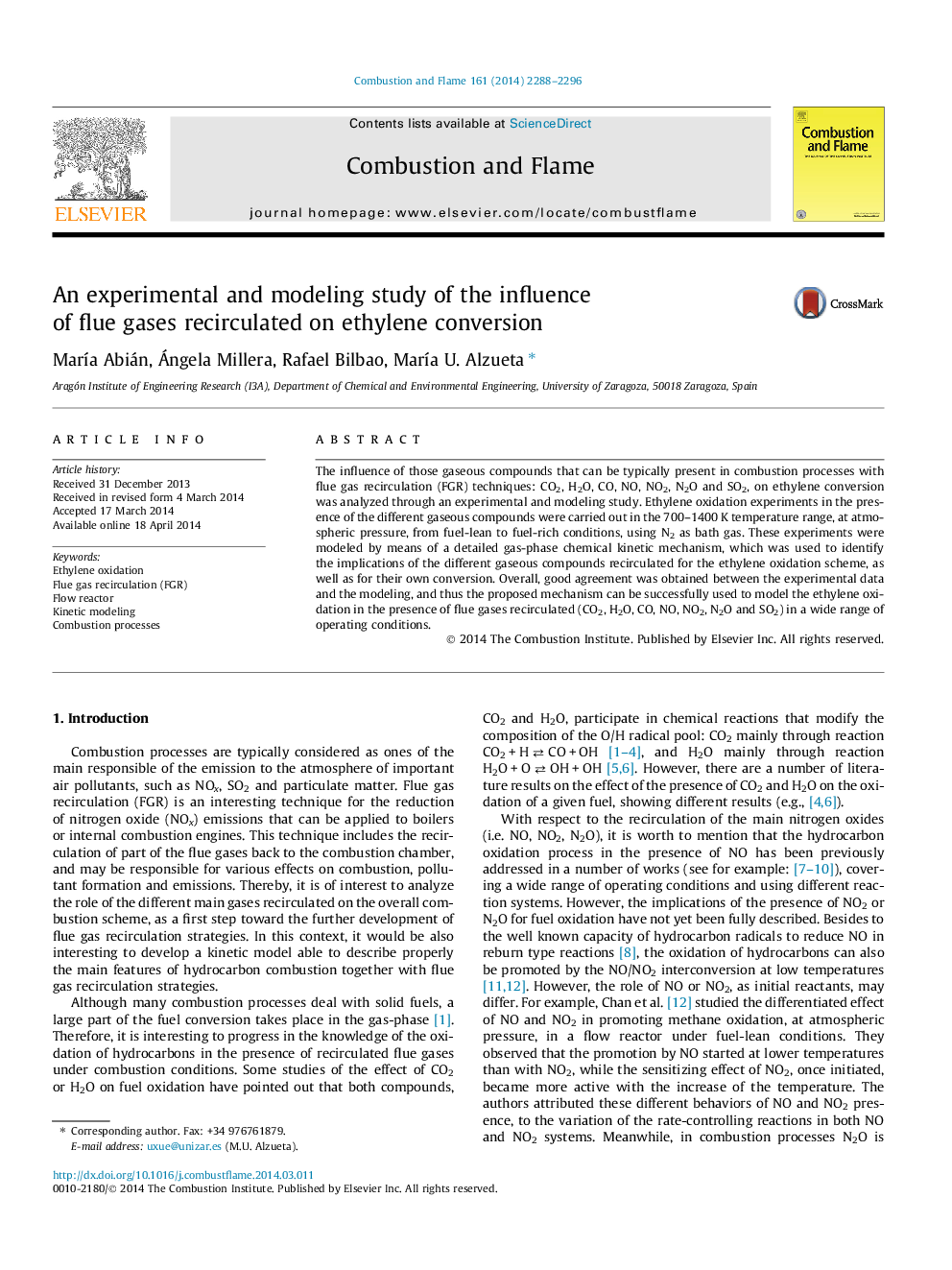| Article ID | Journal | Published Year | Pages | File Type |
|---|---|---|---|---|
| 168553 | Combustion and Flame | 2014 | 9 Pages |
The influence of those gaseous compounds that can be typically present in combustion processes with flue gas recirculation (FGR) techniques: CO2, H2O, CO, NO, NO2, N2O and SO2, on ethylene conversion was analyzed through an experimental and modeling study. Ethylene oxidation experiments in the presence of the different gaseous compounds were carried out in the 700–1400 K temperature range, at atmospheric pressure, from fuel-lean to fuel-rich conditions, using N2 as bath gas. These experiments were modeled by means of a detailed gas-phase chemical kinetic mechanism, which was used to identify the implications of the different gaseous compounds recirculated for the ethylene oxidation scheme, as well as for their own conversion. Overall, good agreement was obtained between the experimental data and the modeling, and thus the proposed mechanism can be successfully used to model the ethylene oxidation in the presence of flue gases recirculated (CO2, H2O, CO, NO, NO2, N2O and SO2) in a wide range of operating conditions.
